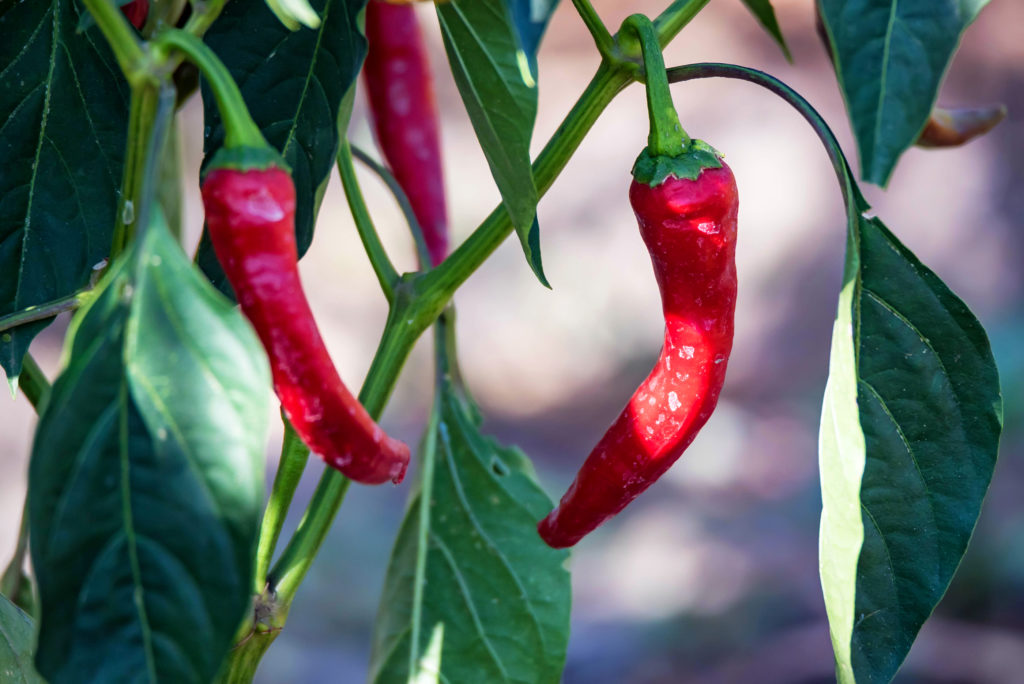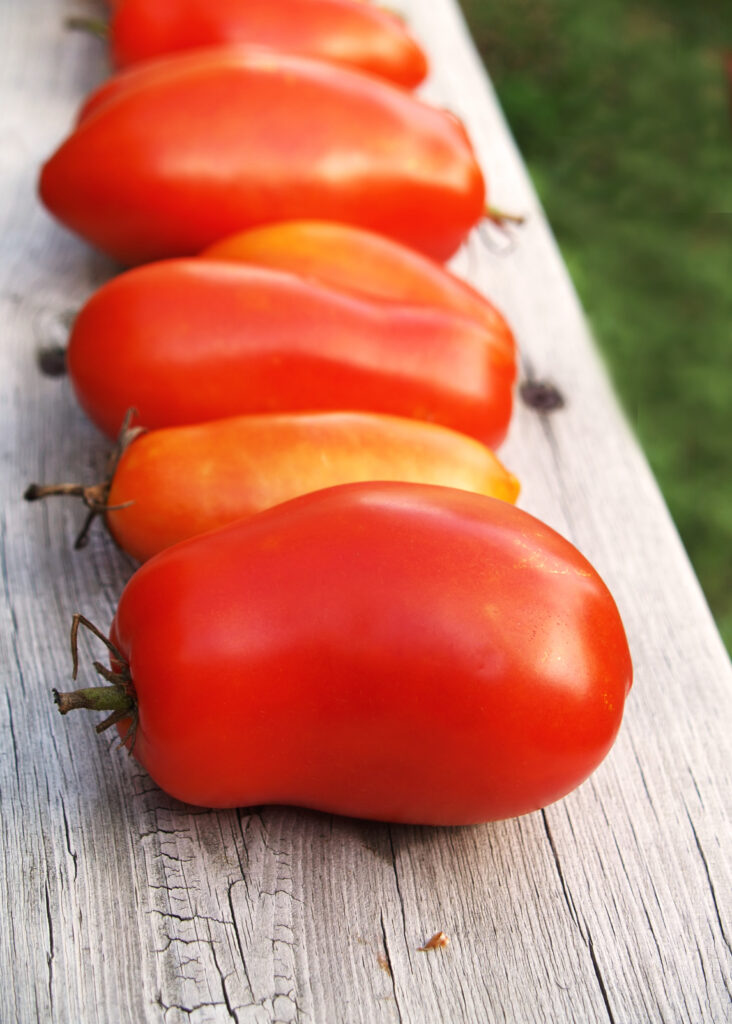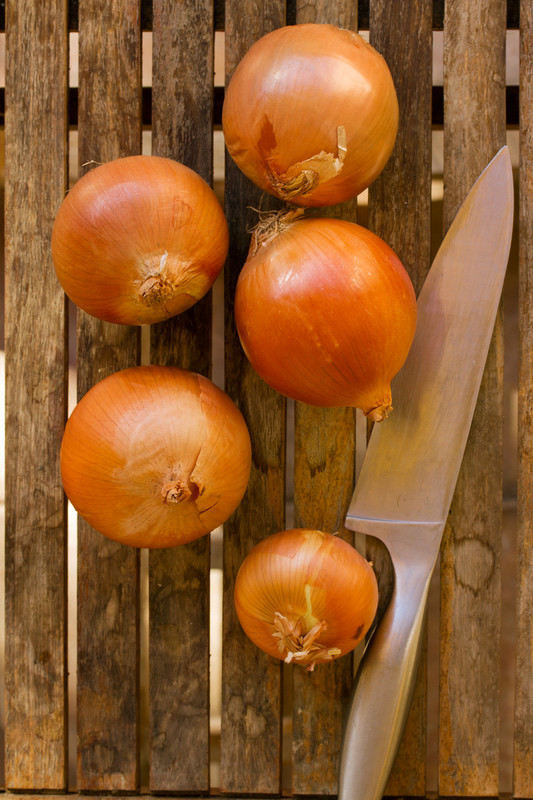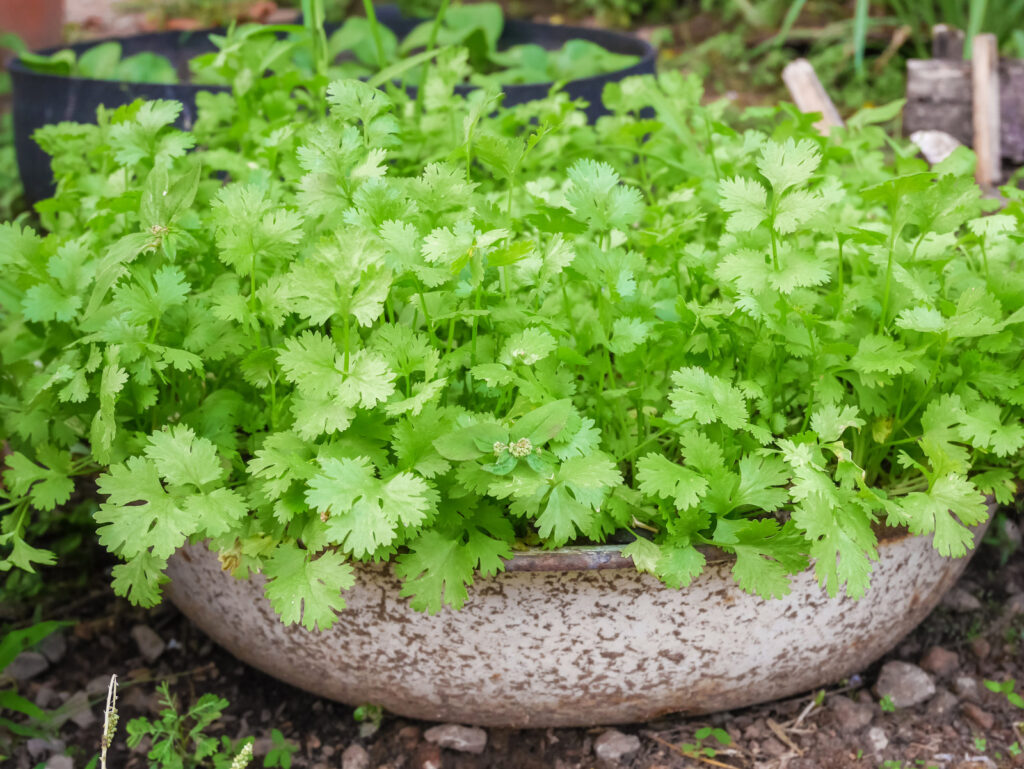Salsa is a delicious and versatile condiment, dip that can be enjoyed with a wide variety of foods. Although it’s most commonly paired with chips, salsa can also be used as a topping for tacos, eggs, grilled meats, or salads.
If you’re a fan of this tasty dip, why not try growing your salsa ingredients? With a little bit of effort, you can easily grow all of the fresh ingredients you need to enjoy homemade salsa.
The vegetables and herbs you need to make salsa include tomatoes, peppers, onion, garlic, and cilantro, basil, or parsley: the basic ingredients of salsa crudas, fresh salsa.
The best part about making salsa at home is that you can control the ingredients and adjust the levels of heat and acidity to suit your personal taste.

Here’s a basic salsa recipe, you can add to this as you like:
How to make fresh salsa
- Core and cut two ripe medium size tomatoes.
- Add one clove of garlic minced.
- Add half a white or red onion diced.
- Add a jalapeno, Serrano, or green or red bell pepper chopped fine.
- Add leaves of cilantro, basil, or parsley chopped.
- Add the juice of half a lime.
- Mix the ingredients gently, and salt to taste.
Salsa ingredients crop-by-crop
Plant tomatoes, peppers, cilantro, and basil require warm soil and air temperatures for the best growth. Plant these when night temperatures average 60°F/15°C or warmer.

Tomatoes for salsa
For classic fresh salsa, choose red tomatoes that grow plump and meaty, not too watery.
Grow a tomato variety that is meatier than other varieties. Meaty plum tomatoes are perfect for making chunky salsa. Plum tomato varieties include ‘Roma’, ‘San Marzano’, ‘Juliet’, and ‘Long Tom’ — all are red and flavorful.
Other meaty tomato varieties are “Celebrity’, ‘Big Boy’, ‘Stupice’, ‘Druzba’, and ‘Mule Team’—these are sweet or sweet and tangy globe tomatoes.
Container Garden Products at Amazon:
- Gardzen 10-Pack 10 Gallon Grow Bags
- Raised Bed on Wheels for Vegetables
- Self-Watering Planters for Vegetables
- Captain Jack’s Dead Bug Brew
- Harris Neem Oil Plant Disease Control
Peppers for salsa
Peppers are a pivotal ingredient in fresh salsa. Choose chilies for their heat or choose sweet peppers for their earthy richness or combine the two for a blend of flavors.
If you live in a very warm summer region, you may want to grow jalapeño peppers.
If you live in a cooler climate, you may want to grow milder banana peppers.
Jalapeño and Serrano are two common hot pepper choices for fresh salsa. Other chilies for salsa are Poblano and Anaheim peppers: Poblano is considered slightly hot by most pepper lovers, and Anaheim is considered the mildest of the hot peppers.
You’ll want to de-seed and mince hot peppers before adding them to salsa. Chili seeds are extremely hot.
Sweet bell peppers can be used in salsa for those who are heat adverse. Green, red, and yellow bell peppers add color and crunch to salsa. Cubanelle is another good choice–a tapered yellow or red pepper that is thick, meaty, and more flavorful than the bell pepper.
Peppers demand a soil temperature of 65°F/18°C or warmer for optimal growth. They will linger if started when nighttime temperatures are not averaging 62°F or warmer. Peppers, like tomatoes, grow best in full sun; they want compost-rich well-drained soil, and soil evenly moist from flower set through fruit development.

Onions and garlic
Onions can bring a relatively sweet to strongly pungent flavor to salsa. Most often sweet globe onions such as ‘Walla Walla’, ‘Vidalia’, ‘Granex’, or ‘Maui’ are diced and added to fresh salsa. If you don’t grow globe onions, green onions or scallions can be added to salsa.
Just a clove or two of garlic minced is added to salsa. Garlic brings its pungent aroma and flavor as a seasoning to salsa–and raw it adds a bit of savor.
Onion and garlic get their best start in soil 55°F/13°C or warmer. These bulb crops like to begin growth when days are cooler and finish when daytime temperatures are warm to hot. Onions and garlic grow best in well-drained, humus-rich, sandy loam soil. Both want medium and even watering through flowering and bulb development; back off the watering in the last two or three weeks before harvest.

Other salsa ingredients–cilantro, basil, and parsley
Cilantro is sharp and tangy; basil is pungent and peppery; parsley is tangy fresh. Choose one of these flavors to add to fresh salsa. It will add a defining undertone.
Cilantro and basil grow best in soil that is 65°F or warmer–just like peppers. Both will be slowed by night temperatures below 60°F. Parsley can withstand temperatures of 5 to 10 degrees cooler but thrives in warm temperatures. Moderately rich, well-drained soil and full to partial sun are required to grow these herb complements to salsa.
Growing salsa crops
To start growing your salsa crops, choose a sunny spot in your garden with well-draining soil. Of course, you can grow all of these crops in pots or grow bags in a sunny spot on a balcony, patio, or deck. If you grow your crops in containers use a well-drained potting mix formulated for vegetables.
Make sure to give each plant plenty of room to grow. Tomatoes and peppers, in particular, require a lot of space, so be sure to plant them at least 18 inches apart.
If you are growing your crops in a garden planting bed, remove any grass, weeds, or debris from the area and dig the soil to a depth of about 12 inches.
Next, mix in compost or aged manure to improve the soil’s fertility. Compost and manure contain essential nutrients that vegetables and herbs need to grow vigorously. A general rule of thumb is to add about 2 to 3 inches of compost or manure for every 12 inches of soil depth. Also, mix in organic time-release fertilizer to give your plants the nutrients they need to thrive.
Once you have added the organic matter, check the soil pH. Salsa ingredients prefer a soil pH between 6.0 and 7.0. Test the soil’s acidity levels using a soil test kit, available at most garden centers. If the pH level is too low, add powdered lime to raise it. If it’s too high, add sulfur to lower it.
Your final garden preparation is to turn the soil once more and allow it to settle for a few days before planting your salsa seeds or transplants. Proper soil preparation is crucial for growing strong and healthy plants.
Timing seed sowing. Get onions and garlic started first in early spring. Wait to plant tomatoes and peppers when nighttime temperatures warm.
Before planting your seeds, it’s important to read the seed packet instructions to ensure you are planting at the right depth and spacing.
Most crops will be planted at a depth of about ½ inch and then covered with light soil. Firm the soil above the seed to ensure the seed makes contact with the soil then sprinkle the soil with a fine mist of water.
Once your seeds are planted, keep the soil moist but not wet. As your seedlings begin to grow, thin them out to give them room to spread. You can also add support structures like tomato cages or stakes to prevent your plants from falling over.

Harvesting your salsa ingredients
Your salsa garden will be ready for harvest by mid to late summer and should give you fresh salsa into late autumn in most regions.
When your plants start bearing fruit, it’s important to harvest your crops regularly to encourage growth. Pick your tomatoes as soon as they are ripe to prevent them from spoiling on the vine. You can clip off any sweet peppers as they grow to an edible size and hot peppers as they gain mature coloring.
Once you have harvested your salsa ingredients, you can use them to create your own homemade salsa. Mix together diced tomatoes, peppers, onions, and cilantro for a classic salsa recipe. You can also add other ingredients like garlic, lime juice, and hot sauce to personalize your creation.
Growing your own salsa ingredients is a great way to add fresh, flavorful ingredients to your meals. With a little patience and care, you can grow a bountiful salsa garden right in your own backyard.
Relate articles:
How to Plant, Grow, and Harvest Tomatoes
How to Plant, Grow, and Harvest Peppers
How to Plant, Grow, and Harvest Onions
How to Plant, Grow, and Harvest Garlic
How to Plant, Grow, and Harvest Basil
How to Plant, Grow, and Harvest Cilantro
Garden Planning Books at Amazon:
- Vegetable Garden Almanac & Planner
- Kitchen Garden Grower’s Guide Vegetable Encyclopedia
- Vegetable Garden Grower’s Guide
- Tomato Grower’s Answer Book



